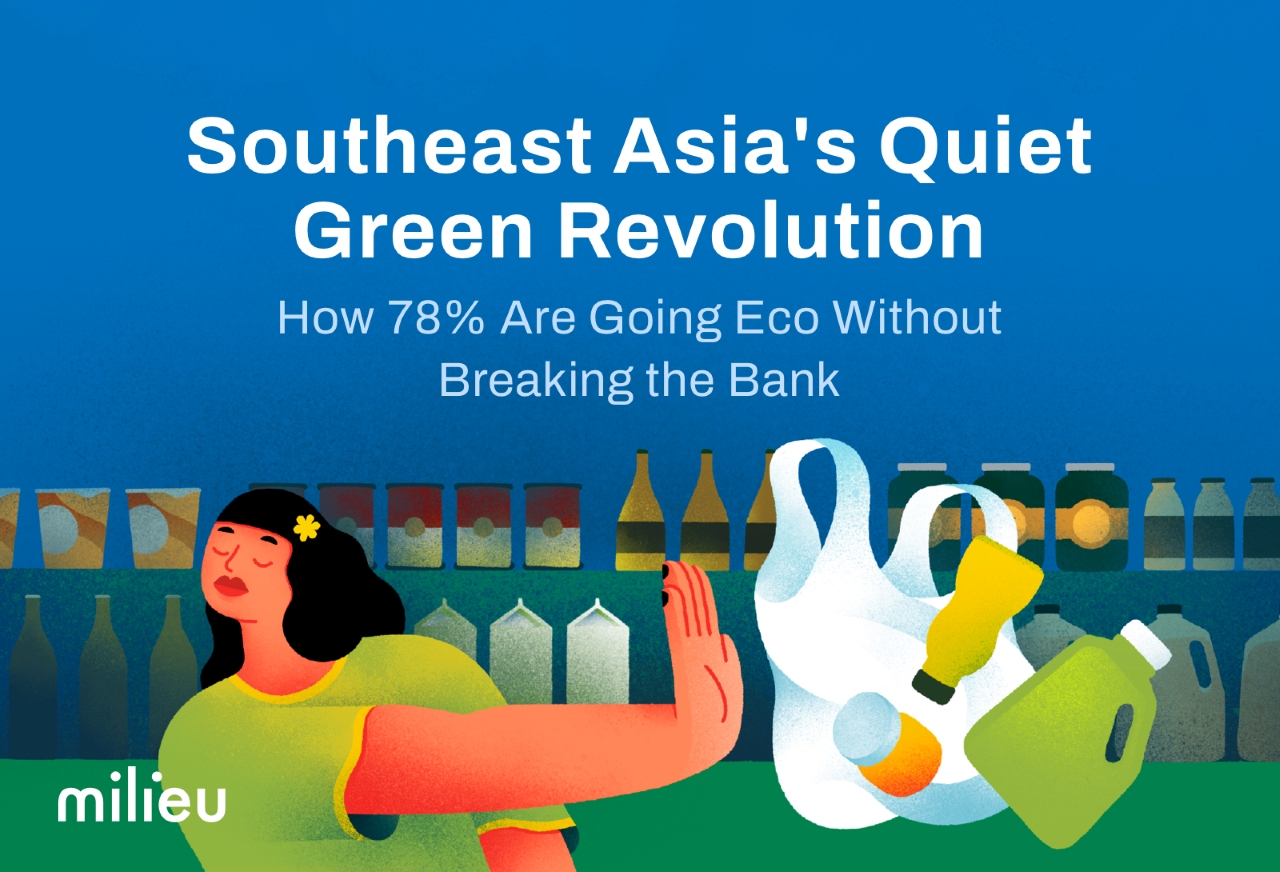Expanding overseas? Do your international marketing research

Expanding your business into international markets is more than just an exciting milestone—it’s a bold, strategic leap into uncharted territory. But while global expansion holds the promise of growth, new customers, and bigger profits, it also comes with a host of unknowns.
Market dynamics, unfamiliar consumer behaviours, and fierce competition in foreign territories can easily derail your efforts if you're not thoroughly prepared. Before taking your brand global, ensure you’ve done the groundwork.
How international marketing research differs from local
At first glance, marketing research might seem the same wherever you conduct it. After all, you're still trying to understand the customer and the market conditions, right? Not quite. International marketing research involves many more variables and complexity than local studies.
- Cultural Differences: Unlike local markets, international marketing must account for varying languages, customs, social values, and consumer behaviours.
- Market Regulations: Every country has legal frameworks, import/export rules, and advertising restrictions.
- Economic Conditions: Exchange rates, local purchasing power, and inflation affect your marketing strategy and pricing.
- Logistics and Infrastructure: Delivery systems, digital platforms, and payment preferences vary widely from region to region.
In short, what works in your home market may fall flat abroad. That’s why tailoring your market research methods and questions to the realities of your target markets is essential. The risk of assumption is far too high.
Why you just can't afford to skip international marketing research
Expanding without proper international market research is like setting sail without a map. Businesses that skip this critical step often underestimate the complexity of global expansion and pay the price later on.
- Misdirected Campaigns: Without clear insights, you might promote your product in a way that doesn't resonate or might even offend.
- Wasted Resources: Time and money spent on entering the wrong market or targeting the wrong audience can quickly drain your budget.
- Unexpected Competition: Local players may already dominate the space, making your entry far harder than anticipated.
- Compliance Failures: Not understanding local legal requirements can lead to fines or bans.
Done well, international marketing research provides the market intelligence to avoid these pitfalls. It also provides a clear, data-driven direction, making planning, adapting, and growing easier—especially when it comes to improving customer satisfaction in diverse markets.
Many businesses rely on trusted sources and data experts to build a strong foundation. Working with an experienced market research panel company can be a game-changer.
These firms offer access to localised insights, demographic expertise, and ongoing market research support that can help you avoid costly errors in unfamiliar territories.
Bear these in mind before beginning your research
Before diving into your research, there are several key factors to be aware of that can shape the quality and outcomes of your international marketing research:
- International studies often cost more due to translation, localisation, travel, or outsourcing requirements.
- The research phase can take weeks or months, depending on your target markets.
- Some countries are transparent with business data, while others may limit access or require local partnerships.
- Consider whether qualitative, quantitative, or mixed methods suit your objectives and audience better.
- Be mindful of language, tone, phrasing, and what is acceptable in that culture.
Preparation is everything here. Knowing these challenges in advance allows you to allocate resources properly, avoid delays, and set realistic expectations.
Setting your international marketing research objectives
Clear goals are the backbone of any research project, especially when navigating the complex world of international marketing research. Without defined objectives, your study may produce interesting results, but no actionable insight.
So, what should your goals focus on? Here are some useful starting points:
- Identify promising markets for expansion based on demand and competitiveness.
- Understand consumer preferences in each region.
- Measure brand awareness or perception abroad.
- Evaluate pricing expectations and sensitivity.
- Explore regulatory or legal barriers to entry.
- Assess local distribution or marketing channels.
These goals will guide your research methods, influence your data collection plan, and shape how you interpret results. Think of your objectives as your compass, and they keep everything else aligned.
International marketing research process
Once you've set your objectives, you should complete them through a structured, step-by-step research process.
Whether you're targeting one region or several international markets, a clear plan helps ensure you're collecting the right data and drawing accurate conclusions.
Finding the right markets
Before anything else, you must identify which markets offer your product or service the best opportunity. Not every market will suit your business model, and going after the wrong one can be costly.
Start by evaluating:
- Economic indicators such as GDP, population size, and income levels
- Market trends and growth forecasts
- Existing demand for your offering
- Ease of entry, including tariffs and trade agreements
- Stability political, economic, and legal
Government portals like Enterprise Singapore offer helpful export guides, market intelligence, and country-specific insights for Singaporean businesses. These resources can help you shortlist potential countries and make data-backed early decisions.
Cultural deep-diving
No matter how good your marketing strategies are, they won’t succeed if they clash with local values or customs. Deep cultural exploration is a non-negotiable step in international marketing research.
You'll need to understand the:
- Social norms and expectations
- Language usage, idioms, and dialects
- Religious or political sensitivities
- Consumer behaviours around spending, gifting, or technology
- Brand perception in different cultures
Even seemingly minor cultural missteps can backfire. For example, colours, images, or humour that work well in one region might offend another. Local focus groups or cultural consultants can offer valuable insight into what resonates and what doesn’t.
Creating buyer personas
Next, you need to turn your data into something practical: buyer personas that reflect the real people you’re trying to reach in each target market. These are fictional profiles based on real information, capturing everything from lifestyle to purchase drivers.
Your personas should include:
- Name, age, profession, and income bracket
- Buying motivations and key pain points
- Preferred shopping channels and devices
- Common objections or hesitations
- Cultural or local-specific influences
Creating personas helps ensure your marketing speaks directly to your target audience rather than applying a one-size-fits-all approach that rarely works in international campaigns.
Creating customer segments
Once your personas are in place, it’s time to be more strategic by dividing your broader audience into meaningful customer segments. This step allows you to tailor campaigns, pricing, and messaging based on shared characteristics.
Segmentation can be based on:
- Demographics – age, gender, education, income
- Geographics – city, region, or country
- Behavioural data – loyalty, purchase frequency, channel preferences
- Psychographics – interests, beliefs, or lifestyles
Each segment may respond differently to your product, pricing, or message. That’s why smart segmentation is key to the effectiveness of your marketing strategy across diverse markets.
Knowing the competition
One of the most overlooked elements of international marketing research is competitor analysis. You need to know who you’re against and what you can do better or differently.
Look into:
- Who the major players are in the market
- Their pricing, positioning, and product offerings
- Their marketing strategies and brand voice
- Customer feedback and complaints
- Market share and reputation
This step tells you where the gaps and opportunities are and helps you avoid entering an overcrowded space where you may struggle to be noticed.
Collecting and processing data
Finally, you must gather and make sense of the information you've identified as important. This step will involve selecting the right market research methods, collecting data, analysing it, and translating it into actionable insight.
- Align with your research objectives
- Be appropriate for the market conditions and audience
- Respect local data privacy laws and ethics
- Use a combination of qualitative and quantitative tools where needed
Once your data is collected, clean and process it carefully. Identify patterns, cross-reference with your hypotheses, and extract key findings. This is where the magic happens, when information becomes market intelligence you can act on.
Types of international marketing research
Understanding the different types of international marketing research can help you decide which methods will give you the clearest picture of your target markets.
Typically, you’ll use a combination of primary and secondary research data, depending on the objectives of your project and the availability of resources.
Each type has its strengths. Choosing the right mix can help you understand local market conditions, customer expectations, and potential competition.
Primary research data
Primary data is information you collect directly from people in your target market. It’s tailored to your specific questions and typically offers deeper insight into consumer behaviour and market dynamics. While more time-consuming and costly, it’s also highly reliable.
Survey data
Surveys are a popular and widely used market research method when expanding into new international markets. They don’t cost much, can reach many people quickly, and work well with different target demographics.
- Attitude surveys to understand consumer opinions, brand perceptions, and lifestyle preferences
- Likert scale surveys to gauge degrees of agreement or satisfaction with statements
- SMS surveys for quick feedback in markets where mobile penetration is high but internet access is limited
- Online surveys for reaching wider audiences quickly, especially when paired with social media or email campaigns
- A customer satisfaction survey, which measures how well your product or service meets expectations in different cultural contexts when assessing potential acceptance in international markets
Tools such as Google Forms, SurveyMonkey, or international panels can help with distribution. Always remember to localise your questions for cultural relevance and clarity.
Panel research data
Panel research involves repeated studies using the same group of people (a panel) over time. This type of research is excellent for tracking changes in consumer behaviours, testing long-term product appeal, or comparing responses across international markets.
- It provides consistent, long-term data.
- It allows for testing multiple products or messages in different markets.
- You can observe shifting market trends and brand loyalty.
Panel providers can often segment responses by region, age group, or behaviour, making it easier to tailor results to target profiles.
Interview data
Interview data is ideal when you need more nuanced responses. This method involves one-on-one or small group conversations and allows you to explore attitudes, preferences, and emotions in depth.
- In-person, especially during market visits
- Phone-based, for convenience
- Video calls, particularly for remote or global teams
- Asynchronous (email or messaging), which is sometimes more comfortable for consumers in certain cultures
Interview data provides context-rich insight, perfect for identifying hidden motivations, testing messaging, or clarifying market intelligence gathered through surveys or secondary sources.
Secondary research data
Unlike primary data, secondary research data has been collected, often by governments, agencies, or other businesses. It’s a fast, low-cost way to understand the basics of your target market before committing to large-scale primary studies.
Government data
Many national governments publish high-quality reports, statistics, and regulatory updates vital for international planning.
In Singapore, for example, platforms like SingStat and Enterprise Singapore provide:
- Export and import data
- Demographic reports
- Country-specific market trends
- Policy updates relevant to cross-border trade
Using government data gives your international market research a credible foundation and can highlight opportunities and potential roadblocks.
Market data
Market data from third-party agencies or industry reports helps you benchmark your brand and make informed comparisons. This type of research might come from:
- Trade associations
- Market research firms
- Industry white papers
- Competitor press releases or financial reports
This information often includes product performance, pricing trends, consumer behaviours, and other insights that can influence decision-making.
Although this data isn’t tailored specifically to your company, it offers valuable context for understanding market dynamics and refining your marketing strategies across different markets.
Presenting your research results
After completing the research process, you must present your results clearly and persuasively to stakeholders or decision-makers. This stage is where all the effort you’ve invested in data collection, analysis, and insight-building pays off.
- Data-driven but not overwhelming, use charts, infographics, and visuals to convey trends and patterns
- Structured, aligning your findings with your initial objectives and outlining what they mean for your target market
- Actionable, offering clear recommendations for the next steps based on validated insights
- Tailored, depending on who’s viewing the report, executives might want summaries and ROI projections, while marketing teams may require consumer behaviour breakdowns or competitor analysis
Tools such as dashboards, interactive reports, or summarised slide decks can help you communicate findings across departments, especially if your teams are across different international markets.
Presenting the research confidently ensures everyone is aligned on strategic directions, budget priorities, and next actions in the global expansion journey.
Planning your market launch
Once the international marketing research has been conducted and the results are in, the next crucial phase is planning your market entry. Here, insights must translate into strategic decisions and operational steps.
- Positioning and messaging tailored to your target demographics and cultural expectations
- Local partnerships or distributors who understand the market
- Regulatory compliance, including permits, taxes, or product approvals
- Channel strategy, whether to enter via e-commerce, physical retail, agents, or franchising
- Pricing strategy, based on economic conditions and competitor benchmarks
- Marketing, PR, and launch campaigns adapted to local preferences and media usage
Carefully integrating your market intelligence and marketing research results into every decision ensures your market launch is data-backed, customer-centric, and culturally aligned.
Conclusion
Expanding into international markets is a complex and multifaceted challenge that requires preparation, cultural sensitivity, and data-driven decision-making. Businesses can avoid common pitfalls by understanding local and international marketing differences. With the right research methods, you’ll gather valuable insights into market trends, as well as consumer behaviours.
At Milieu, we support businesses looking to expand overseas by providing reliable online survey tools and tailored marketing research solutions. Based in Singapore, we help companies make informed, confident decisions in new markets by delivering timely insights that reflect the real voices of consumers across borders.

Author
Milieu Team
At Milieu, we’re a team of curious minds who love digging into data and uncovering what drives people. Together, we turn insights into stories—and stories into action. We also run on coffee, deadlines, and the occasional meme.
Latest Insights


.avif)



